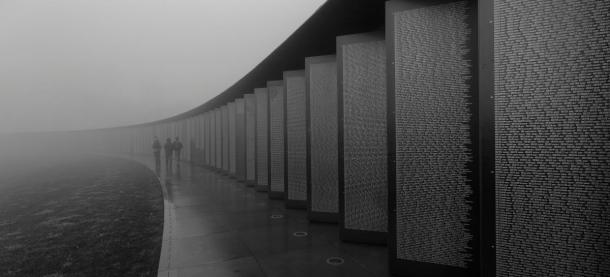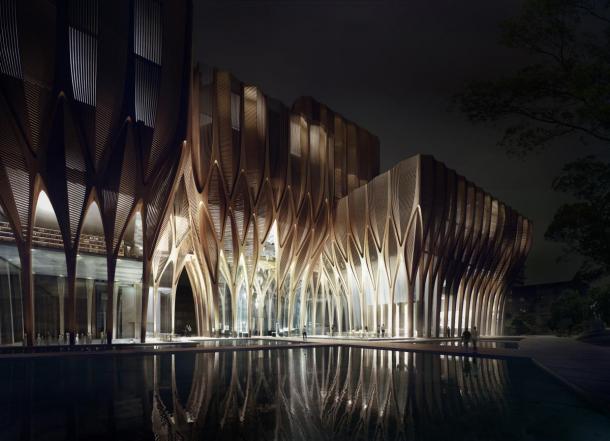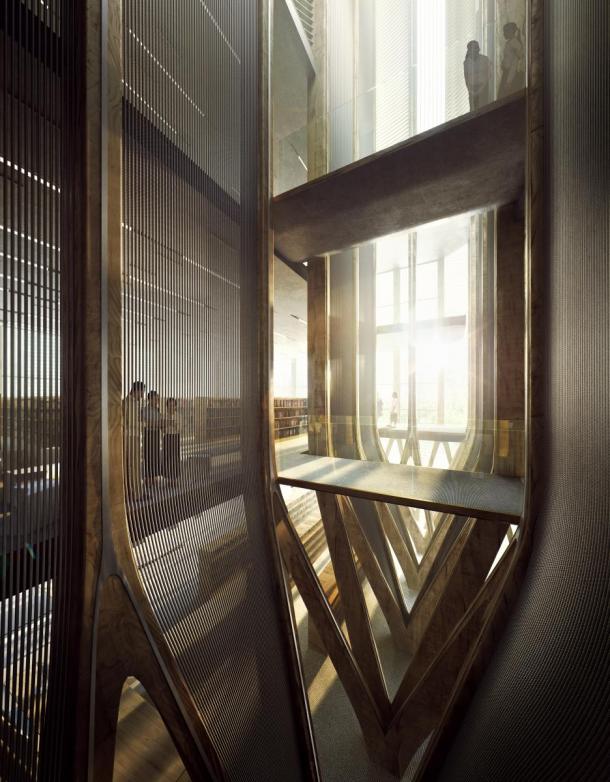A new way of remembering

Architects are rethinking the design of memorial monuments

When the sun is shining in northern France, the light bounces off 500 sheets of bronzed stainless steel panels.
Zigzagging around the inside of a vast elliptical ring, these are a key part of a new World War I memorial in the Nord-Pas-de-Calais region. Each panel is packed with names of the region’s war dead.

But unlike other memorials and cemeteries nearby, the International Memorial at Notre Dame de Lorette lists the 579,606 fallen from both sides of the conflict. Its architect Philippe Prost calls this “a ring of remembrance” and “an expression of brotherhood and peace”.
These notions of reconciliation and putting the past behind us will also expressed at another site 4,000km away. In Cambodia a new genocide memorial is planned for the capital Phnom Penh.
The Sleuk Rith Institute comprises a museum, research centre, graduate school, media centre and a digital archives library. It’s the brainchild of Youk Chhang, a tireless human rights activist and investigator of the Khmer Rouge atrocities, and the founder of the Sleuk Rith Institute.

Youk Chhang is a survivor of the Khmer Rouge’s brutality during the 1970s. As a teenager, he was a prisoner under the Khmer Rouge, and his members of his family were victims of the regime.
Through his Documentation Centre of Cambodia, he has spent more than a decade amassing details of atrocities committed, and his million documents will be housed in the institute’s archives.
Yes despite this harrowing personal experience and the tragic history explored at the institute, he is determined to build a place that looks forward rather than back.
“Cambodia will never escape its history, but it does not need to be enslaved by it. Post-conflict societies have to move on,” he believes.

To achieve this, he selected the world-renowned architect Zaha Hadid, whose signature style comprises futuristic forms and liquid curves, evident in the London 2012 Olympics’ Aquatics Centre.
Hadid’s appointment has helped break with some of the architectural stereotypes associated with genocide memorial architecture, which is typically heavily angular, quasi-industrial, and distress-invoking.

Youk Chhang points out that: “In the context of genocide and mass atrocity, memorial architecture has tended to reflect the evil and misfortune of the historical period it represents,” he says. “In this sense, the architecture’s legacy is dark, sombre, and oriented to the past.”
Such examples includes the Washington DC Holocaust Memorial Museum designed by James Ingo Freed, the Memorial to the Murdered Jews of Europe designed by Peter Eisenman, and the Jewish Museum of Berlin designed by Daniel Libeskind, which has windows that are constructed of sharp glass shards.
“This is not to criticise or denigrate such models but, instead, to emphasise that in light of Cambodia’s rich cultural and religious traditions, we must move in a different and more positively-oriented direction,” Youk Chhang explains.
To this end, Hadid and her team have created a light, interlocking structure that sweeps up from a narrow base. And rather than being built in the austere materials of stone, concrete or marble, the Sleuk Rith Institute will be in warm, welcoming timber.
“Our hope is that our designs for the Sleuk Rith Institute… can have a truly transformative effect,” says Hadid, “bringing new life and a bright future on a site that holds traces of the great tragedies of the past.”
So while Cambodians wait for this uplifting monument to be built, visitors to the battlefields of France can be moved by the Ring of Remembrance, and can try to put historical discord behind them.




